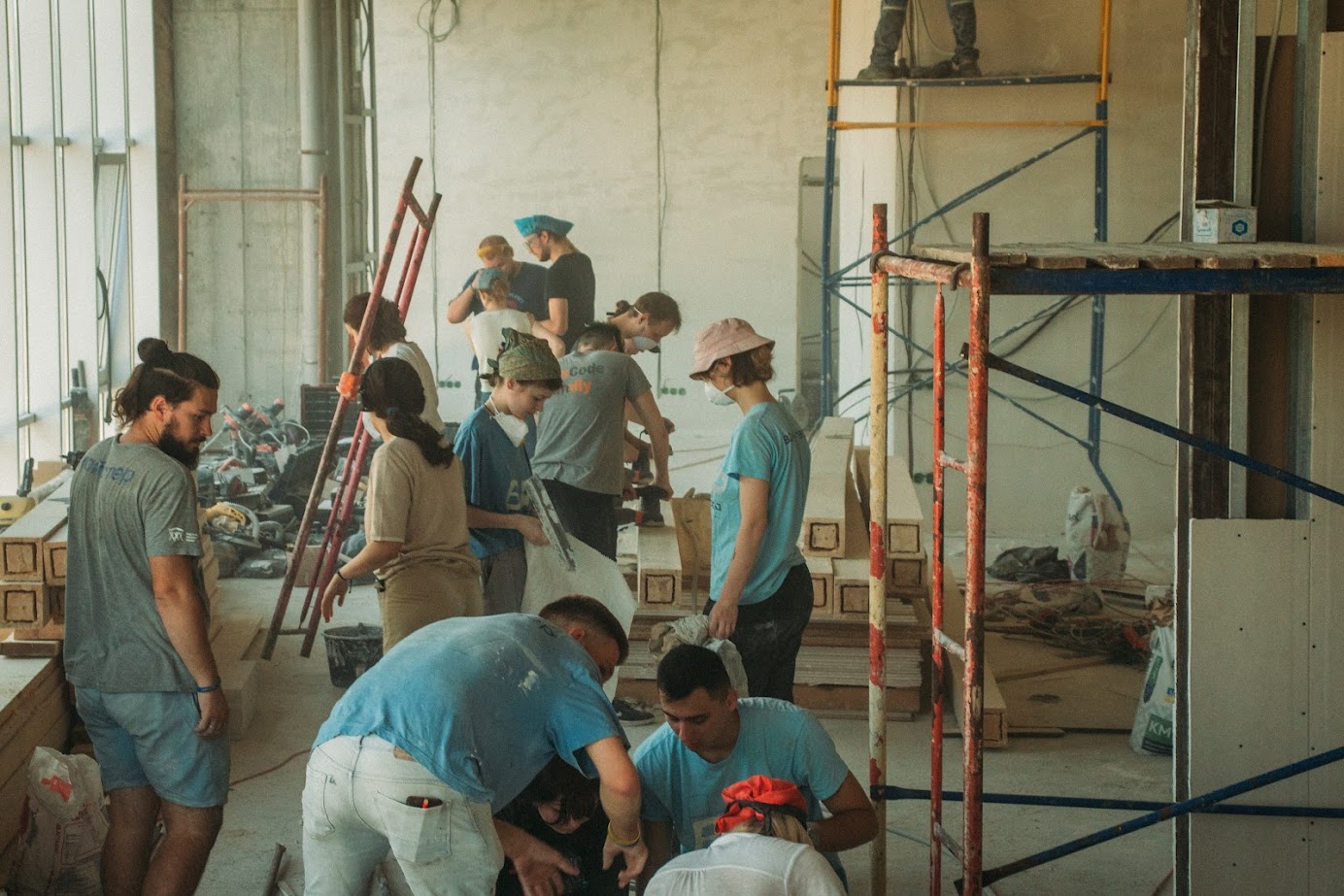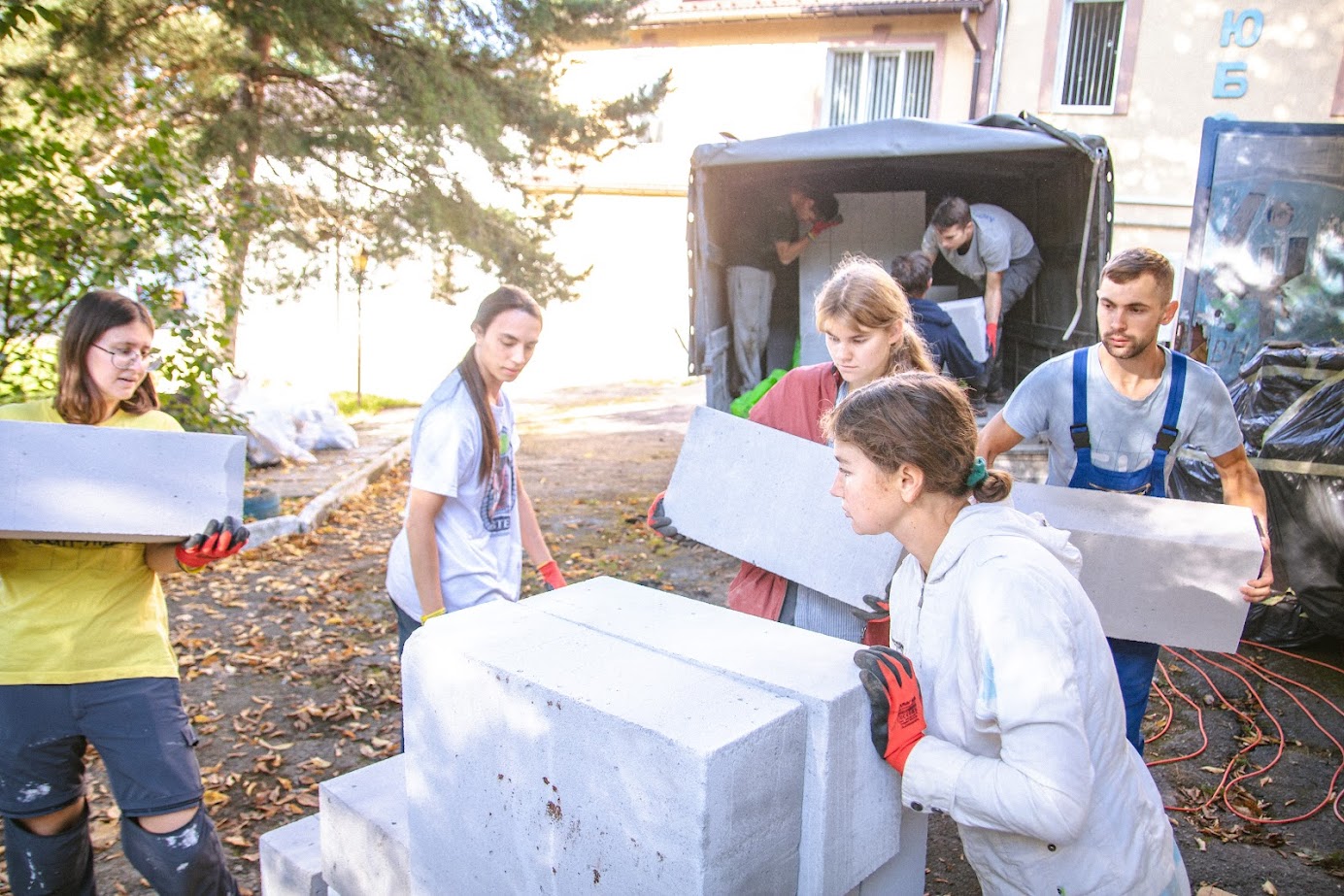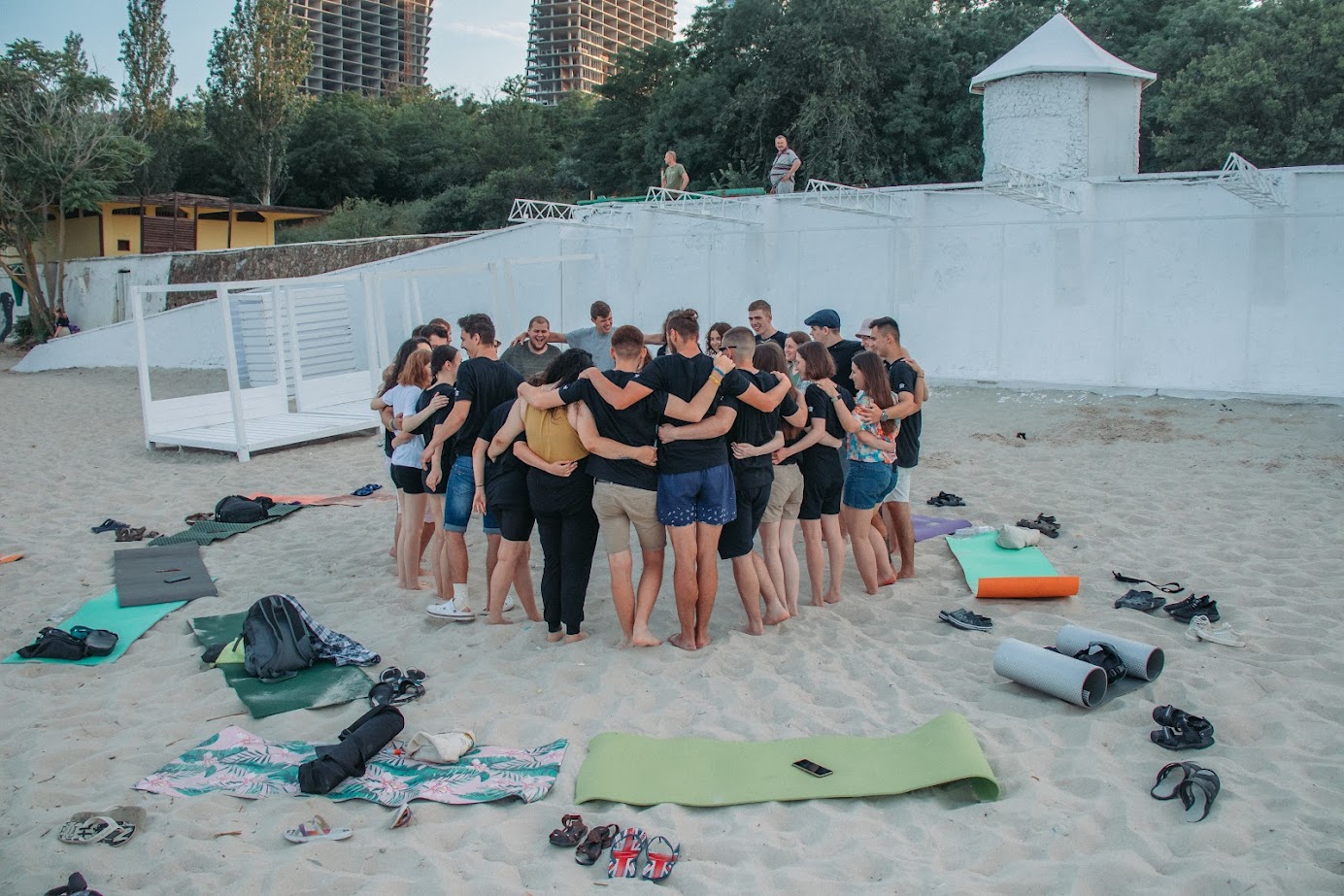How Ukraine’s Youth Are Leading in Rebuilding
In a full-scale war, rebuilding cannot wait until peace. Communities need to restore homes, schools, and public spaces now—to return to work, study, and a sense of normal life. One group helping make that possible is Building Ukraine Together, or BUR. What began as a student initiative in 2014 has grown into a civic organization that holds volunteer camps across Ukraine. BUR focuses not only on reconstructing damaged buildings but also on strengthening trust, cooperation, and local leadership—especially among young people. Natali Yamandi, who manages BUR’s camp leader program, shares how it all began, how their work has changed since 2022, and why young people keep coming back.
How did BUR begin?
Back in 2014, a group of students from the Lviv Education Foundation decided to go to Kramatorsk to see with their own eyes what was happening in eastern Ukraine and to help rebuild homes damaged by shelling. A month later, they returned and shared their experience with friends. So, the following year, even more people joined. Over time, it grew into BUR as a full-fledged program.
Before the full-scale invasion, most of these rebuilding camps took place in eastern Ukraine, and young people were regularly joining them.
Do you work only with young people? And are they 18 and older, or even younger?
In general, we work with young people aged 18 to 35. Those under 18 can also take part, but only in safe conditions; for example, during our educational or cultural activities. We include a cultural component in every day of the camp.
Your volunteer activities are focused on reconstruction. Do you have any training system so that people with no prior experience can join?
When I went to my first camp, I also wondered how I could possibly help build anything without having any skills. But the truth is, we have experienced builders in our community, as well as construction coordinators. They organize all the work, are in charge of materials, and explain everything to the volunteers—how to use the tools, how to do certain tasks, and so on.

How did BUR’s work change after the full-scale invasion, when damaged homes were no longer just in the east?
During the first few months, we focused mainly on humanitarian aid. But eventually we realized that, with our experience, we needed to get back to rebuilding. So, in May 2022, we resumed running reconstruction camps. That year, we organized around 40 of them. We were supported by many donors and volunteers at the time.
Some of our volunteers also joined the Armed Forces of Ukraine.
In fact, there’s now a whole community of BUR alumni serving in the military—about 100 people. We support them as well.
Three staff members from our office also went to the front. New team members usually are former volunteers, just like me.
How did you first get involved with BUR?
In the summer of 2022, I went to Bulgaria for an environmental volunteering program because I was very interested in eco-activism. There, I met another Ukrainian girl who told me about BUR. So, when I came back home to Odesa region, I decided to join a rebuilding camp. I felt I needed to help here, at home. I invited some friends to come with me, but everyone had some excuse. I went anyway.
I spent ten days in Mykolaiv region, in a town that had recently been hit by a missile. We helped people repair homes, fix roofs, patch up walls. It was such a meaningful experience for me that two days after returning home, I signed up for the next camp.
After that second rebuilding camp, I went to the camp leader school. A camp leader is someone who organizes the cultural and educational program for volunteers after the workday. Each day during the camp, we invite speakers or organize excursions for the volunteers. I really wanted to grow in this area. I had worked in tourism for three years, so it felt natural—it’s also about people.
But what was really meaningful to me was the idea that someone could go home changed after our camp, with new knowledge and experiences.
After finishing the school, I took part in six more camps over two months, nonstop, as a camp leader. I really loved it.

One project I remember well was rebuilding a school in Hostomel, then later we went to Makariv. Working there was hard in a way, because we were constantly talking to people who had lived through the occupation and were sharing very difficult stories.
The year 2022 was very active. What’s the situation like now?
A major donor who had been supporting us left the market, which was a big blow. They were supposed to help us run 50 camps this year, but now we’ve had to scale down significantly and we are still looking for funding for the ones we planned. We’re partnering with businesses and doing fundraising ourselves. One camp costs around UAH 200,000 to UAH 300,000, so it’s not simple.
We’re also applying for grants, but we try to work with organizations that share our values and vision. Not everyone understands, for example, why we also include informal education in our camps. Some say things like “Why not just have volunteers working 24/7?”, but that’s not what we’re about.
How many volunteers do you work with?
In total, over the past ten years, around 10,000 volunteers have joined our activities. In 2022, during the peak, it was around 3,000.

Do you get many international volunteers? How do they find you?
Yes. For example, at our upcoming camp in Kherson region, we’ll have eight international volunteers. We’ve never done any international outreach or advertising, but we do have an English version of our website. So, volunteers find us on their own when they search for opportunities to volunteer in Ukraine. Recently, I was reading a motivation letter from a volunteer who said he found out about our organization through ChatGPT. Plus, when international volunteers go back home, they tell their friends—so the word spreads that way too.
People come from very different countries: we’ve had volunteers from France, Thailand, Japan. One guy from Japan even sent us a truck of aid after he went home. He had spoken with one of our builders, found out exactly what materials we needed, and then shipped them to us.
How do you choose where to organize the next camp?
We receive requests—people write to us asking for help rebuilding something. In 2022, we got a lot of such requests, but it was tough to choose back then because we didn’t always know which areas were safe, whether there were mines, etc.
At that time, we had a donor that required us to focus on rebuilding youth centers. Since we were able to do that, those were the projects we selected. Now we’re moving a bit away from youth centers and are looking to support spaces for veterans.
We’ve already helped set up several veteran spaces, which was a powerful experience for us.
In one case, we supported the mother of a fallen pilot—one of those who inspired the image of the Ghost of Kyiv. As we know, it wasn’t one person but a symbol of many Ukrainian pilots. A space was created in his honor, and it was a deeply meaningful project.
The general process goes like this: once we receive about 50 applications, we review them using specific criteria and speak with the communities about their needs. We then select around 30. After that, our team—including the construction coordinator and a project manager—visits all these locations, meets with people face to face, and speaks with local authorities. Then we choose about ten communities, whose representatives we invite to a training. The educational component is important to us—we want them to understand our approach, volunteer work, and how these spaces will continue to develop.
If we had enough funding, we’d work with all of them. But currently, we were only able to select one community. Now we’re looking for funds for the rest of the projects.